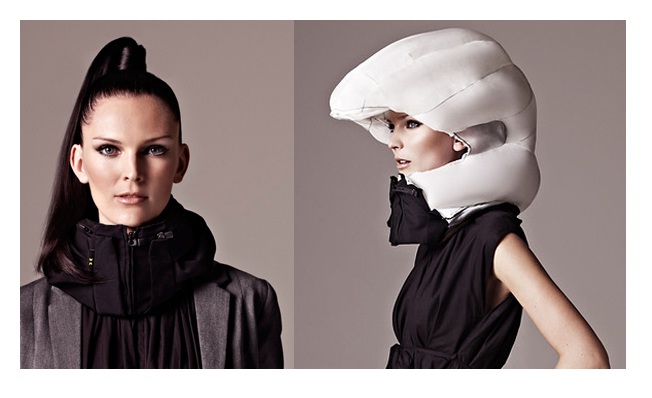
Airbag cycle helmet technology has been found to be up to eight times more effective than current polystyrene designs following tests carried out by Stanford University.
The airbag cycle helmet tests were carried out using a crash test dummy dropped from varying heights up to a maximum of two metres. Almost every current cycle helmets are made from expanded polystyrene (EPS) foam covered in a thin plastic shell. There is no peer-reviewed evidence to prove their effectiveness in preventing head injuries.
The experiments carried out on airbag helmets revealed peak accelerations (the force that leads to brain injury) achieved up to an 8-fold reduction in the risk of concussion compared to standard polystyrene helmets. The research is published in the Annals of Biomedical Engineering.
How does a airbag cycle helmet work?
The use of airbags now extends beyond those built into the steering wheel of every new car; motorcycle clothing can now incorporate an airbag that protects the collarbone and neck, and car manufacturers have developed a system that inflates on the exterior of a vehicle’s bonnet to protect pedestrians. The advent of airbags in cars has improved safety for car occupants and the designers of the Hövding hope it can do the same for cyclists.
In the event of a crash a motion sensor activates a small canister of helium, which inflates the airbag in one tenth of a second.
Much debate surrounds the use of cycle helmets – despite a dramatic increase over the last decade in the number of cyclists who wear them, the number of head injuries sustained has not declined. For more information about this, and other reasons why helmeted cyclists may be at greater risk than those who choose to ride without them, visit cyclehelmet.org
The ethical choice
The ETA was established in 1990 as an ethical provider of green, reliable travel services. Over 30 years on, we continue to offer cycle insurance , breakdown cover and mobility scooter insurance while putting concern for the environment at the heart of all we do.
The Good Shopping Guide judges us to be the UK’s most ethical provider.

Matt Hodges
Being of larger diameter it is likely to cause an even greater wrench in the neck in a glancing moving impact as opposed to a vertical impact used in the test. Also a greater probability of rotational brain damage. The test only suggests superiority in the totally unrealistic test condition that has been used for years to sell helmets of doubtful efficacy. It is questionable as to whether they are any more effective than a St. Christopher medal at saving lives.